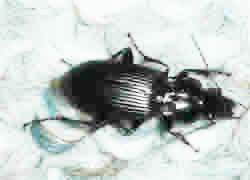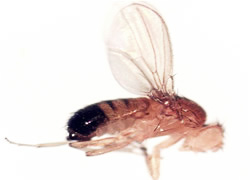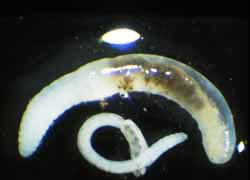Common Pests
While working with your worm composter you may encounter some other critters besides your worms. Here we have a few of the more common invertebrates that may show up in or around your worm bins

Ants
Ants feed on fungi, seeds, sweets, scraps, other insects and sometimes other ants. Compost provides some of these foods and it also provides shelter for nests and hills. Ants may benefit the compost heap by moving minerals especially phosphorus and potassium around by bringing fungi and other organisms into their nests. The presence of ants is an indication of dry bedding. Moisten the bedding a bit and most ants will find some place else to live. If your bin has legs, place the legs in a can of water that has had a drop of dish soap placed in it to reduce the surface tension of the water so the ants can't walk across the water.

Centipede
Centipedes are fast moving predators found mostly in the top few inches of the compost heap. They have formidable claws behind their head which possess poison glands that paralyze small red worms, insect larvae, newly hatched earthworms, and arthropods - mainly insects and spiders. Remove carefully because they can harm you.

Cluster Fly
Cluster Flies ( Pollenia rudis ) Sometimes called "attic flies", usually appear in late fall or early winter and again on warm, sunny days in early spring. They buzz around the home and gather in groups at windows. The cluster fly is a little larger than the common housefly and moves more slowly. It can be recognized by the short, golden colored hairs on its thorax, the part of the insect that the wings are attached to. The larvae, or maggots of cluster flies develop as parasites in the bodies of earthworms. The adult flies emerge in late summer and early autumn and seek protected places to spend the winter.

Beetle
The most common beetles in compost are the rove beetle, ground beetle and feather-winged beetle. Feather-winged beetles feed on fungal spores, while the larger rove and ground beetles prey on other insects, worms, snails, slugs and other small animals. Rove beetles are slender, elongate beetles with wing covers (elytra) that are much shorter than the abdomen; over half of the top surface of the abdomen is exposed. Most rove beetles are black or brown. One species has gray markings on the wings and abdomen. Most rove beetles are medium sized beetles, a few species are up to 1 inch long. Rove beetles are active fliers or runners. When they run they often raise the tip of the abdomen. Rove beetles don't sting, but can give a painful bite. They are found in or near decaying organic matter and feed on other insects such as fly maggots. In

Fruit Fly
A Fruit Fly is about one third the size of the housefly. Adults have

Potworms
Pot Worms are very small, little white worms that can reach densities of 250,000 individuals per square meter. The highest populations are found in acid soils. They feed on bacteria and fungi. They eat dead organic matter and small feces. They ingest small mineral particles and probably play an important role in mixing organic matter into the mineral soil. They have no enzymes for digesting complex polysaccharides and thus do not digest the organic matter they ingest. They are good for your compost system and harmless to you, your worms and plants. Enchytraeids are sometimes raised as fish food.
Information courtesy of Dorothy Benoy at www.happydranch.com/invertebrates

